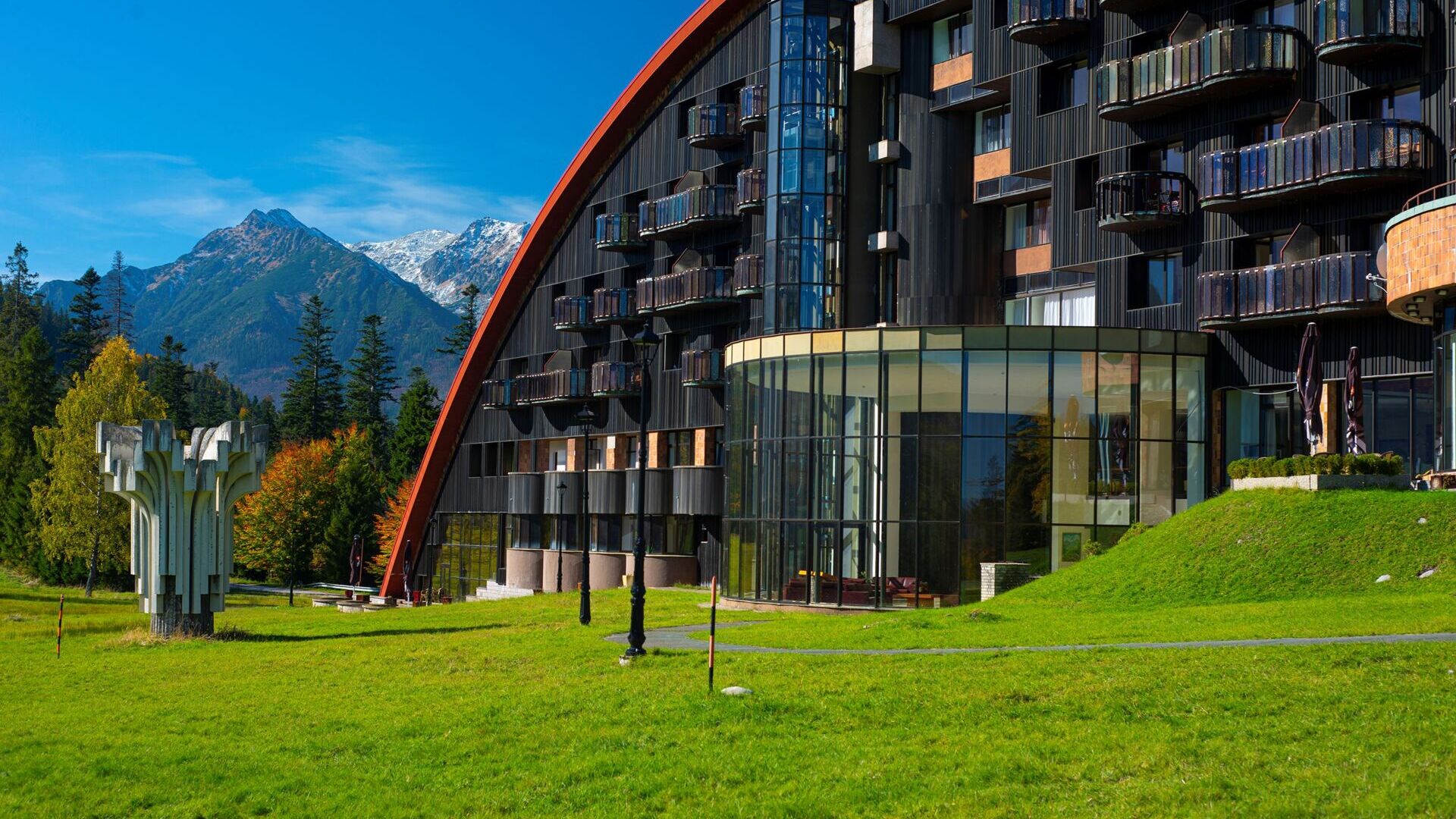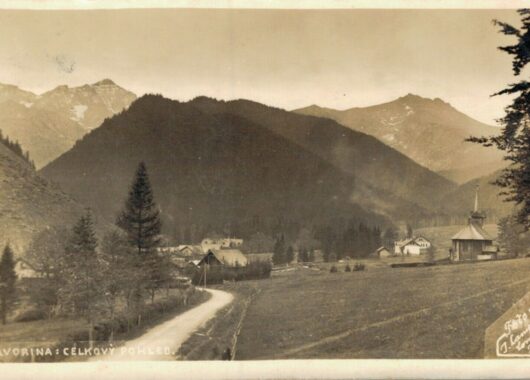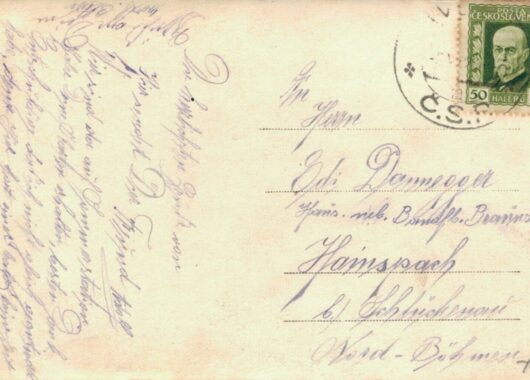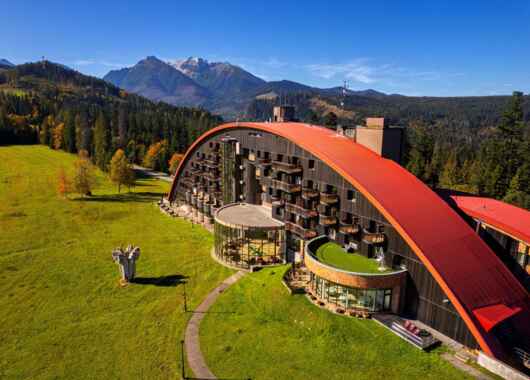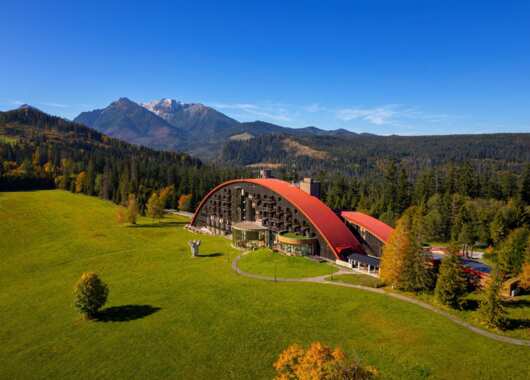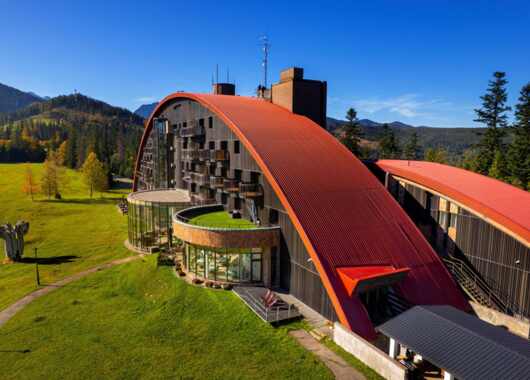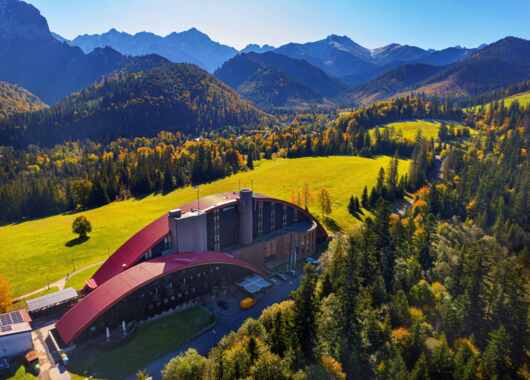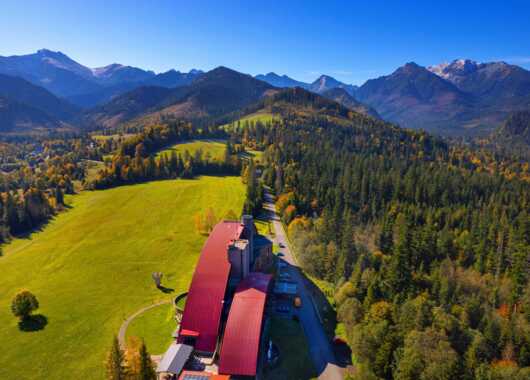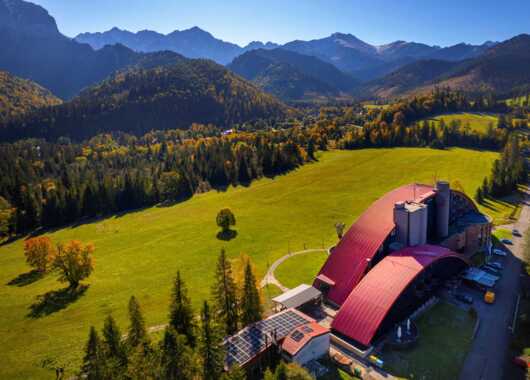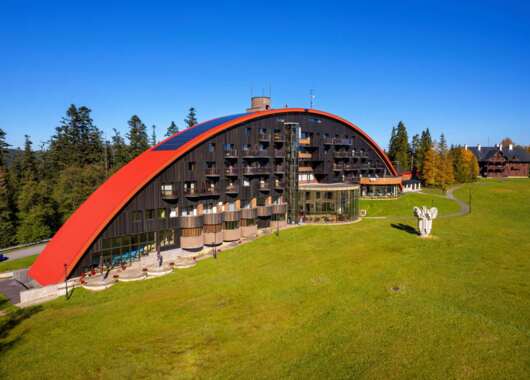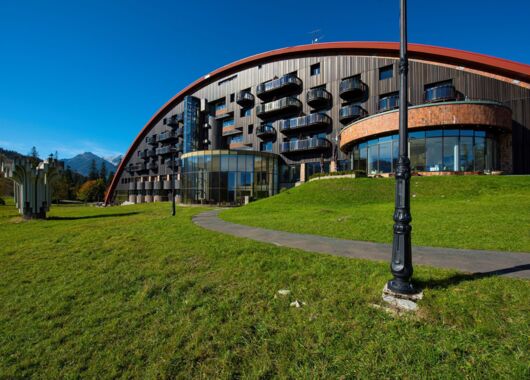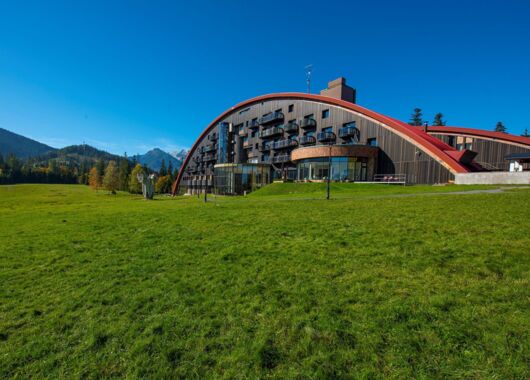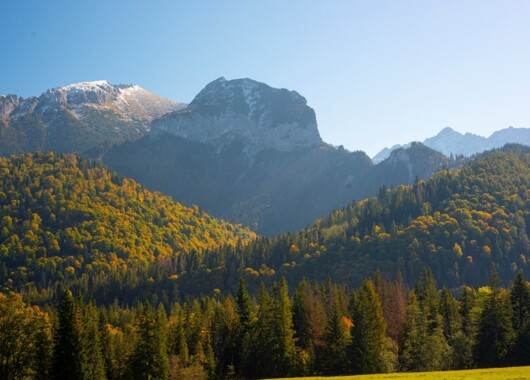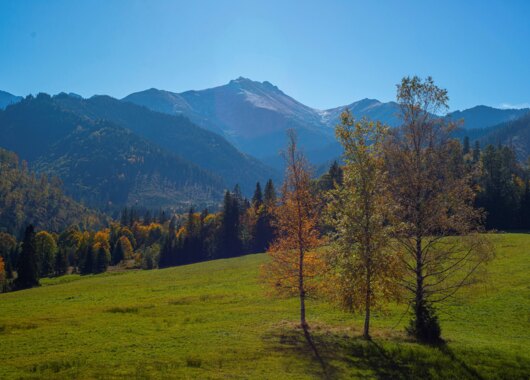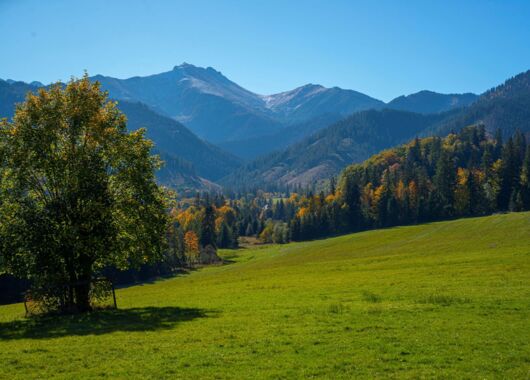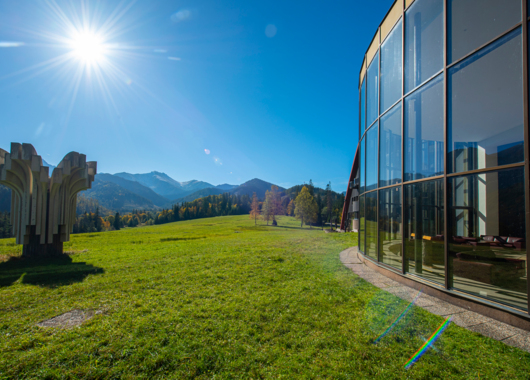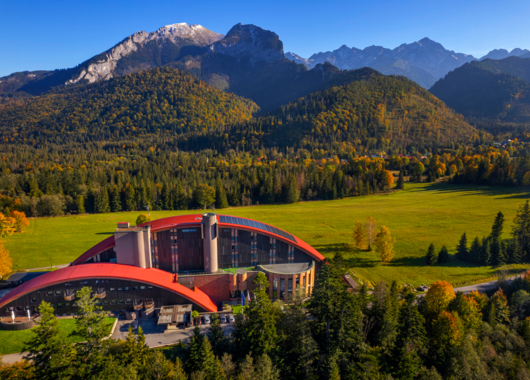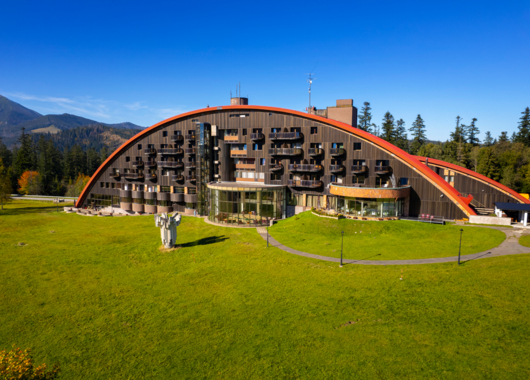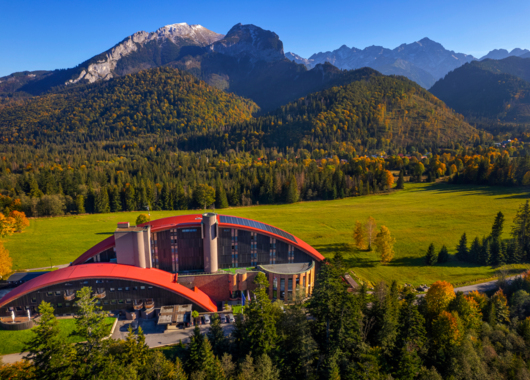Tatranská Javorina is one of the most beautiful and interesting villages in Slovakia. It is located in the northern part of the High Tatras, on the border with Poland. It is a village with rich history, culture, nature and tourism. The settlement developed from the seasonal lighthouse of the so-called Lendackský velkostatek. The founding of an ironworks and ironworks in 1759 created the conditions for permanent settlement. Lack of ore caused the later conversion of the ironworks into a cardboard factory, which completely disappeared in 1935. In 1879, the Javorina district was purchased by the Prussian Prince Christian Kraft Hohenlohe.
He transformed Tatranská Javorina into a forestry settlement and the headquarters of his estate, built a wooden hunting manor and a wooden church of folk architecture. In the surrounding forests he established a large game farm, where he imported foreign game (ibex, bison, Caucasian deer and others), which, however, could not adapt to the local conditions. In the 19th century, the village became a popular place for tourists and mountaineers who wanted to discover the beauty of the Tatra Mountains. In 1899, the first mountain hut was built in the Javor valley, which is still in use today.
In 1920 Tatranská Javorina became part of Czechoslovakia, but it was a disputed territory between Czechoslovakia and Poland. After World War II the village was annexed to Poland, but in 1958 it was returned to Czechoslovakia.
In 1970 it was declared a monument reserve of folk architecture.
SEMI-ARCH BUILDING
An architectural gem
From the very beginning, the hotel was an architectural gem of its time.
BEAUTIFUL PLACE
Interesting history of the hotel
An unusual semi-circular structure, an interior with beautiful crystal chandeliers and wood carvings, various lounges, remembering many a meeting of political representatives, which in the 20th century had their influence on the history of Slovakia - this also forms an interesting history of the hotel. The modernized and renovated hotel currently operates under the name Montfort****
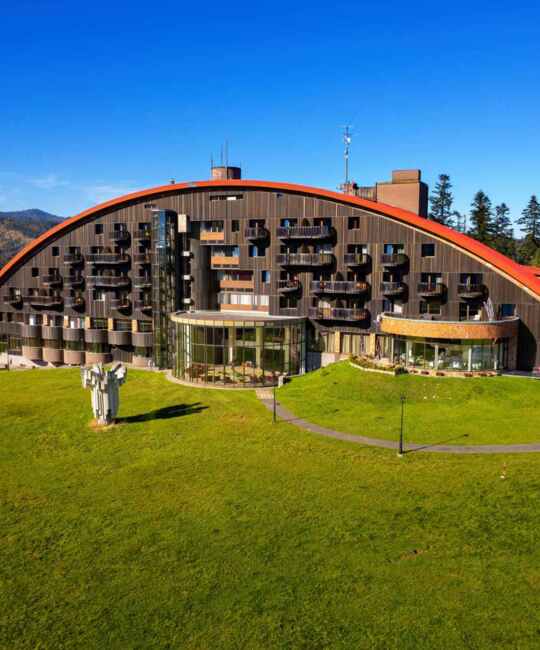
Tatranská Javorina is known for its historical and cultural monuments. Among them is the Hohenlohe hunting castle, which was built in 1883-1885. The author of the project, Viennese architect Jean Leyendecker, drew inspiration from the Swiss mountain regions. The construction of the two-storey log building on the plan of a cross with a Swiss decorated entrance facade with a balcony was carried out by the local builder Ján Lipták from Poprad - Veľká, who cooperated with the construction supervisor, the Czech architect Karl Zdeněk Líman.
The interior furnishings were made by the court upholsterer Franz Ivinger from Vienna. After the death of the prince, the heirs were not interested in maintaining the Javorina estate, so in December 1935 the state bought the property. The Javorina State Forest Administration was established and after the establishment of the Tatra National Park, the former estate was transferred to the park administration. The hunting lodge changed its administrators several times in the following years. At present, this state property is managed by the Office of the President of the Slovak Republic and is mainly used for representational purposes.
The President of the Republic made it possible for one day a week for all those who are interested to visit this gem of wooden architecture included in the list of national cultural monuments, to walk around the interior of the manor house, to get acquainted with its history and to enjoy the magnificent view of the stunning panorama of the Belianske and Vysoké Tatry Mountains.
The monumental and mysterious Hotel Montfort is a unique hotel complex set directly in the Tatra National Park at an altitude of 1000 m above sea level.
The hotel was originally called Poľana, later renamed Kolowrat by the new owner. After the change of ownership and after renovation and modernization, it received a new name Montfort. Its rich history is closely linked to the period of the Czechoslovak Socialist Republic.
According to available information, the location of the hotel was chosen by Vasil Biľak, a member of the Central Committee of the Communist Party of Czechoslovakia at the time, who was a passionate lover of nature, and it was in Tatranská Javorina that he was enchanted by the hunting lodge Hohenlohe, where he spent some time, and the beautiful scenery with its magnificent views and silence.
The architects of the hotel were Julián Hauskrecht, Štefan Ďurkovič and Štefan Svetko, who were given the task of designing a facility that would serve for extraordinary business meetings of party officials. The architecture of the building is characteristic of Štefan Svetko's handwriting, but his co-authorship was obscured during the implementation for political reasons.
The hotel is situated on a gentle slope in the centre of the former hunting ground of Count Ch. K. von Hohenlohe. It was built in the 1970s as an exclusive accommodation for top government officials. The unusual semi-arched building became an architectural gem of its time. The main building consists of two parts with arch-shaped masses covered by double-pitched roofs.
They are interconnected by an entrance and a communal floor and above by two towers of vertical communication cores. The north tower is of prismatic and the south tower of cylindrical mass design. The eastern part has three storeys, the western - accommodation part is six storeys. All rooms are oriented to the south-west with a view of the ridge of the Belianske Tatras.
Circular shaping is also used in other elements - it occurs on terraces and balconies, in the plan of parts protruding from the main mass, landscaping and even the shape of the roof of the apartments.
The interior of the hotel was originally decorated with beautiful crystal chandeliers and wood carvings. The hotel also had its own soundproof cinema room where the Communist Party leadership censored or approved films, the Red and Blue Lounges and the Slovak Room.
The hotel hosted various meetings and social events that influenced the history of Czechoslovakia as well as the modern history of the independent Slovak Republic.
In 1977, the hotel was declared the most modern hotel in Czechoslovakia, visited by state delegations from the former USSR, but also from other countries. The hotel staff was sworn to secrecy. Houses were built in the village for the employees, as they had to be available and present at the workplace at any hour of the day or night. Gustáv Husák, the last president of Czechoslovakia, was a guest of the hotel in 1977 when he attended the opening ceremony of the new ski resort in Tatranská Javorina. At the hotel he met with the Polish President Henryk Jabłoński and signed an agreement on cooperation in the field of tourism.
In 1986, he was visited by Cuban President Fidel Castro, where he spent several days. In 1992, the hotel witnessed a historic event.
Vladimír Mečiar and Václav Klaus signed the documents on the division of Czechoslovakia. The act took place in the Red Lounge. It was also the last glorious moment of the hotel where history was written and where important politicians met.
Until 1993, the hotel served only state officials, was hidden from the world, guarded by the army and the police, and the public had no access to the building. Very few historical sources and period photographs from its glory days have survived, and we can only learn about its "secrets" from the residents' stories. In 1993, the hotel was bought by a new owner, restored and opened to the public as the Kolowrat Hotel.
Over time, however, the owners changed, but its original appearance, splendour and uniqueness have been preserved to this day.


